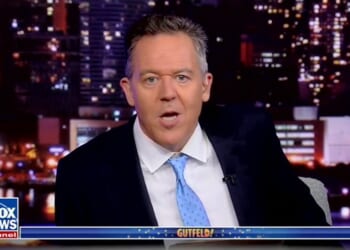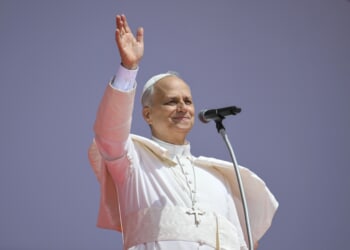How may an economic conservative assess President Donald J. Trump’s first 200 days?
President Trump has: pulled out of the Paris Climate Accord; challenged the greenhouse gas “Endangerment Finding” on carbon dioxide; required that every new regulation must have benefits that exceed costs; enforced work requirements for welfare; expanded production of American oil, gas, and coal production; increased mining on federal lands; supported educational school choice; withdrawn from the World Health Organization; and taken legal control of the bureaucracy, among other positive reforms.
It has been a remarkable presidency. But there are three serious challenges.
He has been so successful that one of the top Republican strategists fears that success is also the Republican Party’s major problem, asking why anyone would vote for Republicans in the 2026 midterm election with nothing else to fix? It has been a remarkable presidency. But there are three serious challenges. We have commented on debt and dollar instability, and defense readiness and intelligence. The final threat is tariffs, considered to be set at trade’s highest rates since the 1930s Smoot-Hawley tariff, with a Great Depression as a result only two years later. (RELATED: Why ‘Liberation Day’ Frightened Democrats)
Any market supporter must begin by divulging that he dislikes tariffs. As the Mises Institute notes, tariffs are essentially taxes on imported goods, and these taxes are ultimately borne by domestic consumers and businesses. This is based on the theory of comparative advantage, which holds that foreign trade exists because no country is efficient at doing everything. Countries should produce goods and services that have lower production costs and greater export appeal, and import high-cost domestic items. Domestic consumers end up with quality and lower costs.
Tariffs raise costs for domestic producers who rely on imported raw materials or components, potentially making them less competitive, hindering economic growth. Rather than creating jobs, tariffs can displace jobs in industries that rely on imports or those affected by retaliatory tariffs. The Institute finds that the result of tariffs on foreign imports is higher prices for goods and services, reduced consumer purchasing power, and lower standards of living.
That is the proper theory. But as libertarian Cato Institute leader David Boaz conceded,
Every tariff, subsidy, regulation, mandate, or other government program creates winners and losers. In most cases, a small number of winners, with the losses spread almost invisibly across the whole society. Economists call it concentrated benefits and diffuse costs. The tariff benefits domestic steel producers and unions, and the costs are spread out over everyone who buys products made with steel or aluminum. Which group is aware and engaged in the debate over the issue? Obviously, the steel companies.
Besides this standard political pressure for tariffs, President Trump faces the fact that he built a substantial and critical part of his winning political coalition with a constituency specifically demanding tariffs that would increase domestic industrial employment, leading him to support tariffs. He seems to believe in them, too. But Trump is essentially a pragmatist. One has to look closely to see what is really happening in today’s tariff world.
When the President finally announced his formal tariff program this August, The Washington Post noted, he “celebrated the start of his long-awaited tariffs” not by emphasizing the tariffs themselves and their long-term effect on employment. Instead, he emphasized that they would produce funding for the government, “flowing into the USA at levels not thought even possible!” Commerce Secretary Howard Lutnick added that the government could collect $50 billion a month in revenue, which would be a boon to the “dismal financial health” of the economy. (RELATED: Tariffs As the New Tax Base: A Laughable Idea)
And, somehow, U.S. stocks pretty much remained positive as investors appeared unbothered by the new tariffs. What kept the markets up? Let us begin with America’s top two trading partners. Mexico’s general tariff rate was increased from 0.25 to 25 percent (so far), and Canada’s from 0.0 to 35 percent. These are indeed very substantial increases, especially for Canada, where Trump is especially angered for what he considers his northern neighbor allowing Russia to avoid sanctions. But how real are these figures? (RELATED: Trump Broke the Economic Consensus on Trade — and Won)
The United States-Mexico-Canada Agreement is still in effect, and trade covered by it is not covered by the Trump sanctions. And both Mexico and Canada have recently dramatically increased the number of items placed under that exemption. The third largest U.S. trader is China, whose traffic level is still up for grabs but is thought to be much less vulnerable to tariff increases than public rhetoric suggests. Trump wants an incentive for Xi Jinping to place himself closer to the U.S. than to Russia in trade, to balance Vladimir Putin.
The next most important trading partners are Germany, Japan, Switzerland, Ireland, Taiwan, South Korea, and Vietnam, most with 10-15 percent tariffs. But the reaction of the European Union and Great Britain has been surprisingly modest, perhaps due to reasonable exclusions and small effects. The best estimates for the total costs of the major tariffs are that “the higher tariffs will push U.S. real GDP growth down by 0.8 percent and boost prices by 2 percent.” Still, this level’s effects “would be unfortunate but probably not severe enough to roil U.S. financial markets.” (RELATED: Trump’s New US–UK Trade Deal Puts America First)
But the absolute bottom line is that none of the agreements for any of the countries have been made public in their details, many or most are simply promises for the future, and there is no enforcement mechanism — or probably any way to enforce provisions if anyone wanted to do so. The best bet is for more show than blow. But so much ambiguity easily gets out of control. (RELATED: Trump’s Underwhelming UK Trade Deal)
So, what can a libertarian oriented conservative conclude? Nationalist intellectual Oren Cass believes the U.S. is in “the middle of a transformation” on trade and economic policy generally, to make it less free market and more managed. More than the Great Recession? He will be disappointed. We do not even know what the major nations are doing quietly with their own tariff rates. Could the net worldwide tariff rate even go down? This is all led by a president who tries to keep his political promises but who is too sharp to reject outright the fundamental principle of comparative advantage and other basic market principles. Trump is clearly better with America’s friends as the British and EU settlements demonstrate (although the deal is not yet final), and he is, most of all, flexible. “We will work it all out” is his standard response to difficulties.
Trump also understands that traditional market conservatives are a part of his political coalition. While the more nationalist Secretary Lutnick clearly dominated in the early days, it is understood in Washington that the more conservative Treasury Secretary Scott Bessent and U.S. Trade Representative Jamieson Greer stepped in to somewhat rationalize the process, whatever it is. And Trump is pragmatic enough to change course, as the whole process demonstrates.
The result clearly is not free markets or what economic theory demands. But it could be much worse under an ideological leftist or even a Great Recession centrist. My experience is that Trump often listens. Those who understand tariffs must make the case to him and his close associates.
READ MORE from Donald Devine:
Pitfalls and Obstacles Plague Defense Modernization
A ‘War’ on the Civil Service or Controlling a Powerful Union Political Machine?
Donald Devine is a senior scholar at the Fund for American Studies in Washington, D.C. He served as President Ronald Reagan’s civil service director during his first term in office. A former professor, he is the author of 11 books, including his most recent, The Enduring Tension: Capitalism and the Moral Order, and Ronald Reagan’s Enduring Principles, and is a frequent contributor to The American Spectator.




![Steak ’n Shake Mocks Cracker Barrel Over Identity-Erasing Rebrand [WATCH]](https://www.right2024.com/wp-content/uploads/2025/08/Steak-n-Shake-Mocks-Cracker-Barrel-Over-Identity-Erasing-Rebrand-WATCH-350x250.jpg)



![Soros Network, Others Behind LA Riots [WATCH]](https://www.right2024.com/wp-content/uploads/2025/06/Soros-Network-Others-Behind-LA-Riots-WATCH-350x250.jpg)
![Human Trafficking Expert Details Horrific Biden Admin Endangerment of Migrant Kids [WATCH]](https://www.right2024.com/wp-content/uploads/2025/07/Human-Trafficking-Expert-Details-Horrific-Biden-Admin-Endangerment-of-Migrant-350x250.jpg)






